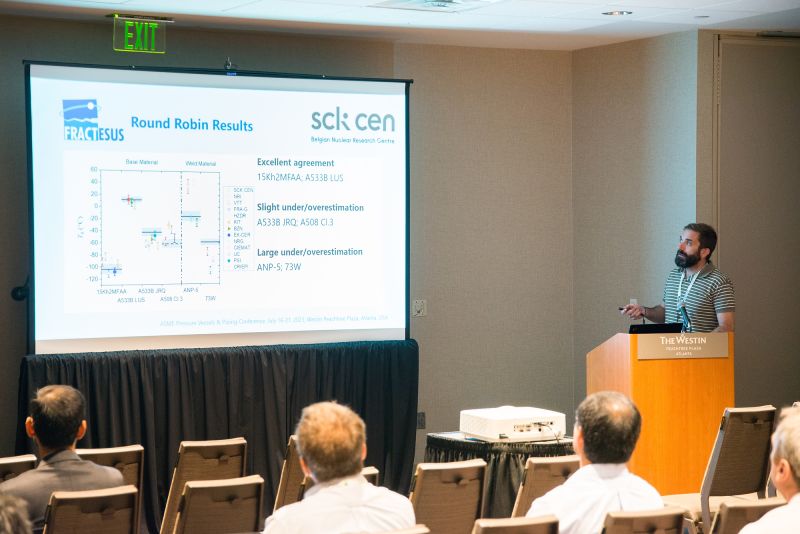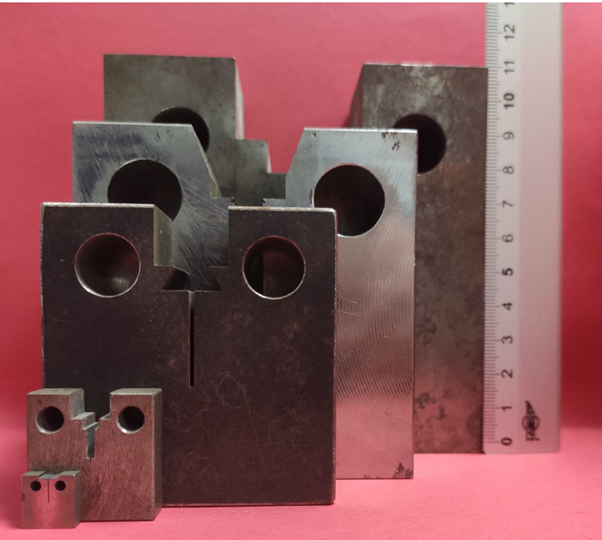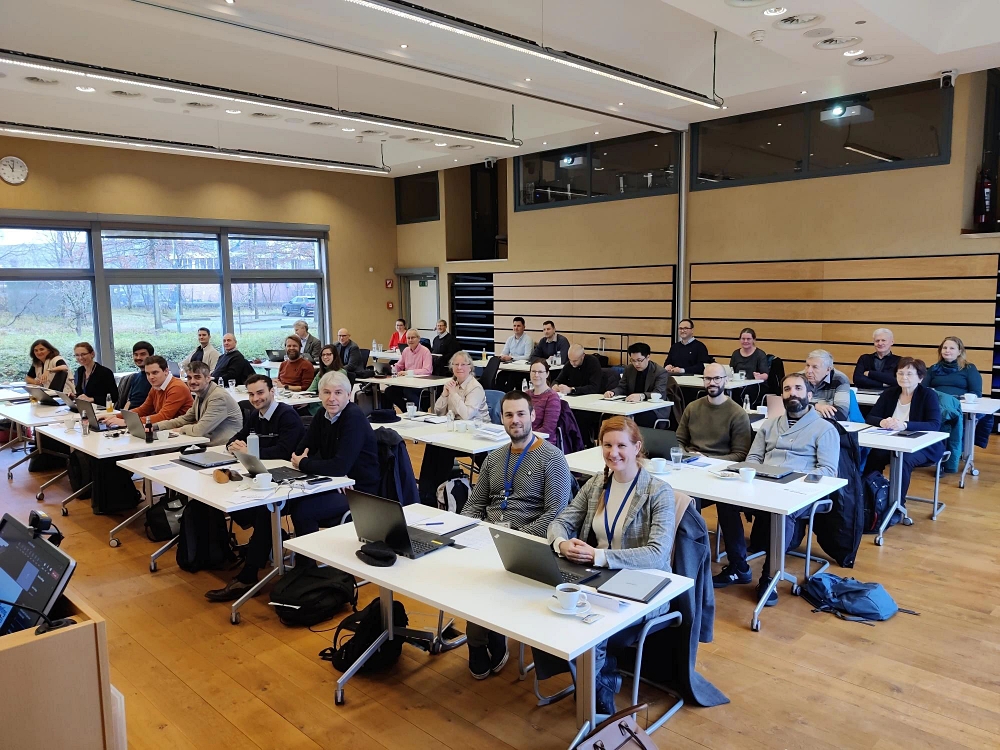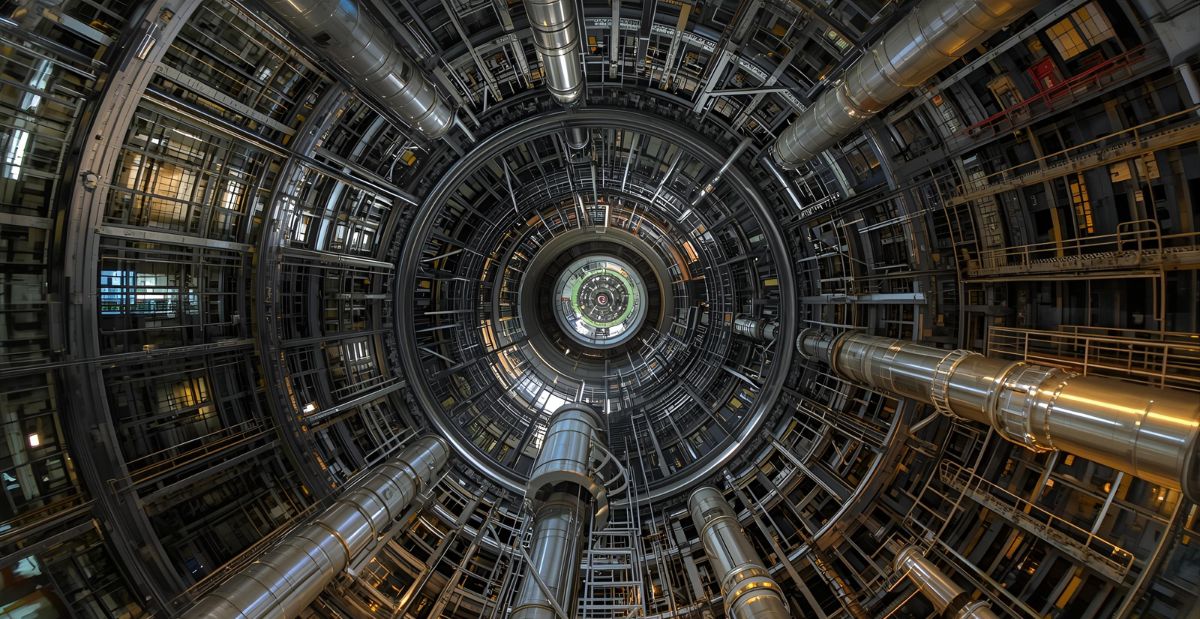
LADICIM Participates in Fractesus, the European Project Aiming to Enhance Nuclear Power Plant Safety
The results obtained validate the effectiveness of miniature compact specimens for evaluating the fracture resistance of nuclear reactor pressure vessels, improving both the quantity and quality of information gathered from irradiated steel samples.
We live surrounded by critical infrastructures that underpin modern life, all of which require a high degree of technical precision in their design and operation. From prestressed concrete and steel bridges built to meet increasing traffic demands and withstand the effects of climate change, to commercial aircraft engineered for more efficient transatlantic flights. From offshore wind turbines over 150 meters tall capable of withstanding wind forces greater than 150 km/h, to hip implants made from titanium alloys and coated with biocompatible materials, designed to endure millions of load cycles over decades.
The safety and durability of these structures and components rely heavily on the field of structural integrity, which assesses the ability of materials to withstand operating conditions and prevent catastrophic failures through advanced monitoring and predictive modeling techniques.
The Laboratory of the Division of Materials Science and Engineering (LADICIM) at the University of Cantabria has played a leading role in this field over the past three decades. It is currently involved in the European project FRACTESUS, a key initiative in structural integrity applied to nuclear safety. The project’s main goal is to validate the use of miniature compact tension specimens (Mini-CT) for evaluating the fracture toughness of irradiated reactor pressure vessel steels. This is a critical aspect of nuclear safety and operability, particularly in the current context of the transition toward a more sustainable energy system in Europe.

One of the most notable achievements of FRACTESUS—funded through the H2020 program under the Euratom call—is the initial validation of Mini-CT specimens, which make it possible to obtain multiple fracture toughness values from a minimal amount of material. This is crucial in the nuclear sector, where the availability of irradiated material is extremely limited.
“Until now, with conventional Charpy specimens, commonly used in surveillance programs, we could only obtain one value from the Charpy curve, which was then used to estimate the fracture resistance of the steel. Now, from each Charpy specimen, we can machine eight Mini-CT specimens, each of which provides a direct measurement of the material’s fracture toughness,” explains Sergio Cicero, LADICIM’s principal investigator on the project. “This allows for a much more accurate understanding of the material’s fracture behavior. Furthermore, the ability to obtain more data from less material not only improves precision but also reduces the risks associated with handling radioactive material.”
Another major milestone is the strong correlation established between the results obtained from Mini-CT specimens and those from much larger conventional standardized specimens. After nearly 700 laboratory tests, FRACTESUS has demonstrated that the micromechanisms of fracture are equivalent in both types of specimens, reinforcing the validity of this technique for potential inclusion in international standards. “We’ve shown that large and small specimens fracture based on the same physical principles. This is key to overcoming the reluctance of nuclear authorities to adopt Mini-CTs,” Cicero explains.

The latest nuclear power plant designs have evolved to include not only traditional Charpy specimens but also conventional compact specimens. However, once tested, “Instead of obtaining just a single fracture toughness value, it is now possible to extract up to 48 Mini-CT specimens from each conventional specimen, greatly increasing both precision and the volume of available data. This represents a significant advance in our ability to analyze and monitor material behavior.”
A total of 22 organizations from Europe, Japan, the United States, and Canada are participating in this European project. Among them are leading institutions such as SCK CEN of Belgium (the project leader), VTT of Finland, the UK’s National Nuclear Laboratory, and the Central Research Institute of Electric Power Industry (CRIEPI) of Japan. The results achieved have a significant impact on the nuclear industry, as the implementation of these advanced techniques would help extend the operational life of nuclear plants by enabling more effective and less invasive surveillance programs.
Beyond its relevance to the nuclear field, this technology is also beginning to be applied to other areas, such as structural steels used in civil engineering, opening up new possibilities for the advancement of structural integrity.
The breakthroughs achieved through FRACTESUS were presented in Santander on September 10 and 11, during an International Seminar organized by LADICIM with the support of the project’s coordinators. The event brought together more than 70 international experts.
30 Years of Experience
LADICIM’s track record in the field of structural integrity is backed by more than three decades of experience. Its participation in pioneering European projects and collaborations with industrial leaders worldwide has been key to developing and validating technologies that ensure the reliability of a wide range of infrastructures.
Since its beginnings in the 1990s, the laboratory has been a leader in researching and applying advanced techniques to improve the integrity of various structures. One of its earliest major projects was SINTAP (1996–1999), a groundbreaking European initiative to develop fracture assessment procedures for structural integrity. The Cantabrian laboratory was part of a consortium of around twenty partners, including major players such as British Steel, UKAEA, Shell, Exxon, and GKSS.

“SINTAP was a fundamental milestone for LADICIM. It not only positioned us as the only Spanish laboratory within a high-profile consortium, but also laid the foundation for our long-standing role in developing standards that have had a lasting impact on structural safety across Europe,” explains Federico Gutiérrez-Solana, founder of the Laboratory and lead coordinator of its research in this field until 2010. “It marked the beginning of a line of work that has defined our role in the research and application of structural integrity.”
The success of SINTAP paved the way for the FITNET project (2002–2006), which expanded the scope of research to cover not only fracture assessment but also fatigue, creep, and corrosion as mechanisms of material failure and degradation. Together with major companies and research laboratories across Europe—such as Corus, VTT, and British Energy—the team developed new European standards for structural integrity assessment.
Over the past 30 years, LADICIM has been a key partner in numerous high-impact European projects (COLDFOSS, FAMEGA, HIPERCUT, INCEFA-PLUS, INCEFA-SCALE), mostly aimed at tackling industrial challenges considered strategic for Europe—either to enhance competitiveness or to ensure safety in critical sectors. In addition, it has conducted research for leading companies such as Siemens, Navantia, Celsa, and Nuclenor, and has contributed to engineering analyses for major civil infrastructure projects, including the Bay of Cádiz Bridge, the largest bridge ever built in Spain.

“The Laboratory has applied its expertise to a wide range of materials, such as structural steels—essential for the construction of civil infrastructures like bridges and wind towers; reactor pressure vessel steels used in nuclear power plants, where safety under irradiation conditions is critical; steels subjected to industrial processes such as galvanizing, laser cutting, and plasma cutting; and even fixation systems for dental and hip prostheses.
LADICIM’s ability to adapt to the needs of any sector and provide solutions based on the technical expertise acquired over the years has been key to its strong position in this engineering field. ‘What sets the Laboratory apart is not only its work in specific areas, but its ability to adapt to a wide variety of sectors. We offer a highly specialized service, backed by deep technical knowledge that allows us to solve critical structural integrity issues in diverse contexts,’ says Gutiérrez-Solana.
Today, professors José Alberto Álvarez, Sergio Cicero, and Diego Ferreño lead the LADICIM research team in tackling complex challenges in the field of structural integrity. The key to staying at the forefront is maintaining a multidisciplinary approach and combining basic research with practical applications.
‘Companies and public agencies turn to us to conduct failure analyses—one of the main applications of structural integrity—to identify the causes of component failures and prevent future issues. It doesn’t matter what kind of structure it is, whether in the aerospace, nuclear, or energy sector. What’s essential is to study and understand how defects can impact the structural integrity of any material,’ emphasizes Professor Sergio Cicero.”



